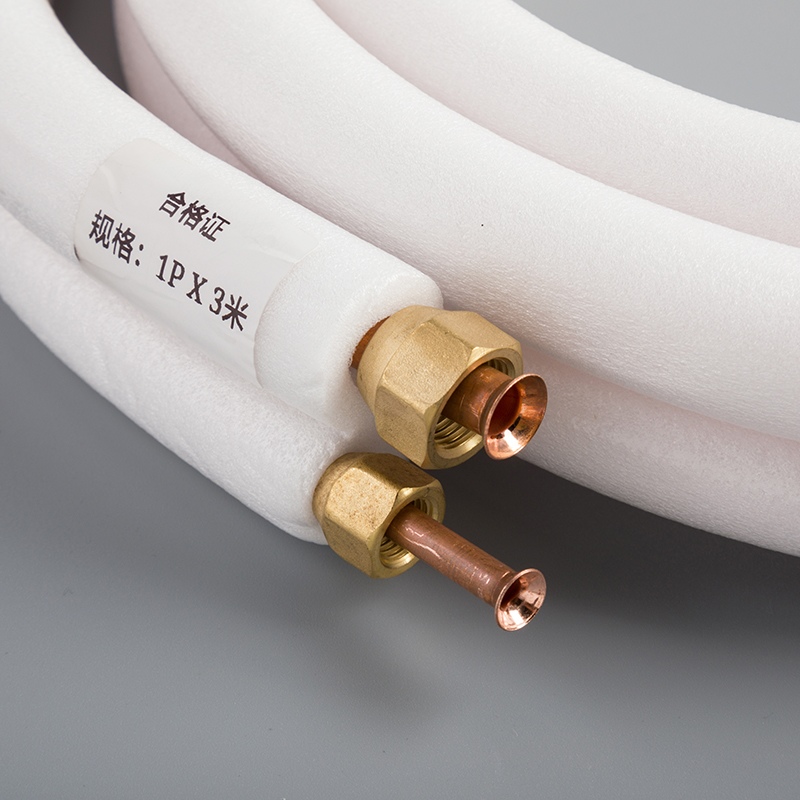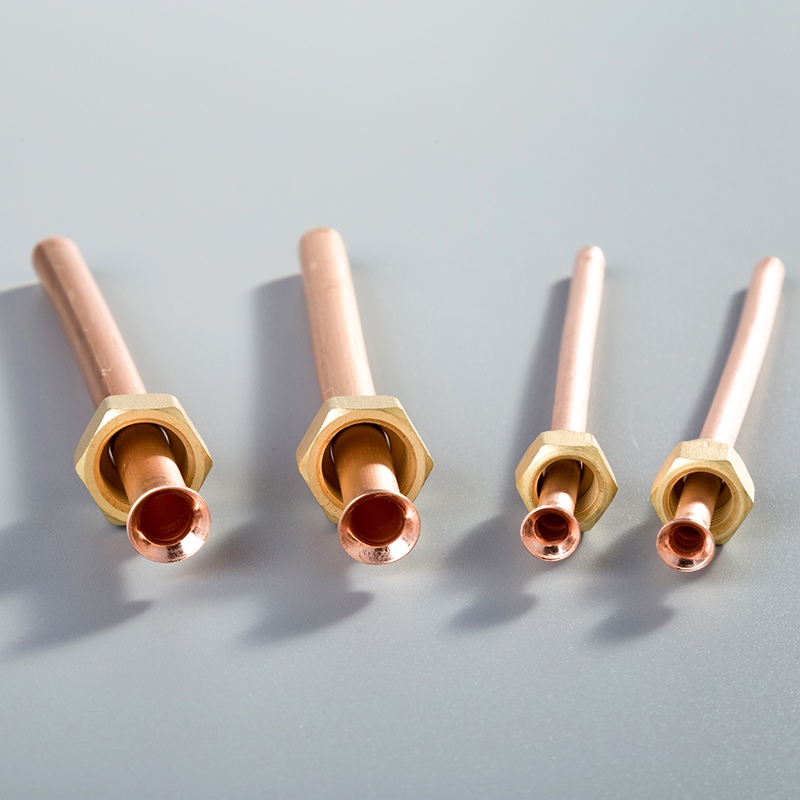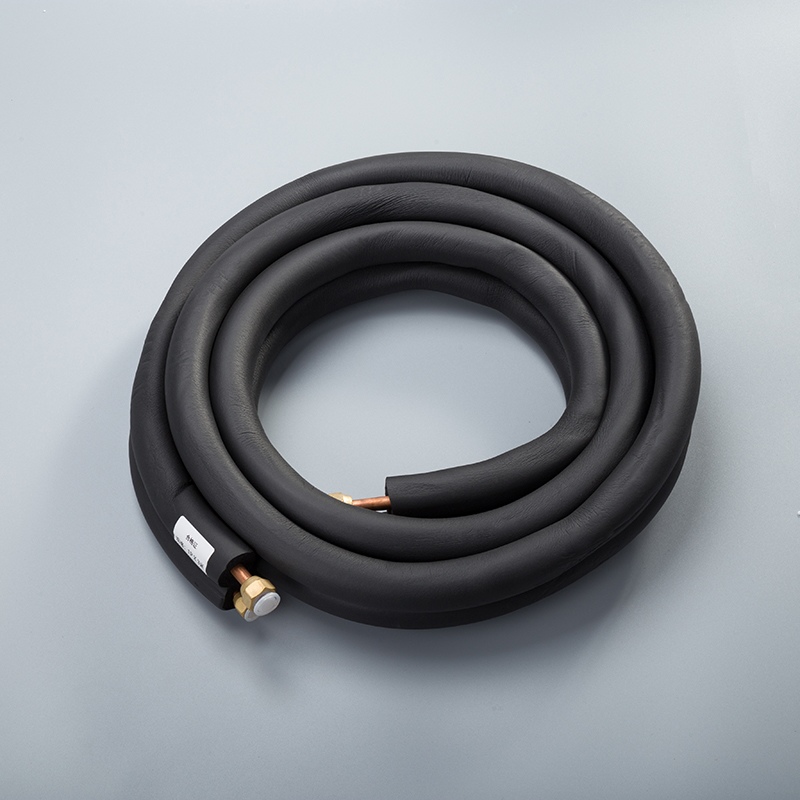What Happens When You Don't Insulate Copper Pipes in Your AC?

Insulation is very important in AC systems. It helps with energy efficiency and performance. Copper pipes are key parts of air conditioning. They move refrigerant and help with heat exchange. This blog post discusses what happens if you don't insulate copper pipes in residential AC units. It highlights the problems that can arise from this oversight.
The Role of Copper Pipes in AC Systems
Function of Copper Pipes
Transporting Refrigerant
Copper pipes are very important in air conditioners. They move refrigerant well.
The refrigerant cools the air. It flows through strong copper tubes to work right.
Heat Exchange Process
Copper tubing helps with heat exchange in AC units.
This part moves heat, helping the system control temperatures and keep rooms comfy.
Consequences of Not Insulating Copper Pipes

When you skip insulation, many issues can happen in home AC units. Let's look at what can go wrong:
Energy Efficiency Issues
Increased Energy Use
Without insulation, copper pipes cool less efficiently.
The AC has to work harder, using more energy.
Higher Bills
More energy use means higher monthly utility bills.
Skipping insulation makes your expenses go up over time.
Performance Problems
Poor Cooling
No insulation makes it hard for pipes to keep the system cool.
This leads to poor cooling and worse AC performance.
More Wear and Tear
Harder work from uninsulated pipes wears out the system faster.
Over time, this can cause expensive repairs and breakdowns.
Moisture and Condensation
Pipe Rust Risk
Uninsulated pipes get wet easily, which can cause corrosion.
Rust weakens the pipes and hurts the whole AC system's function.
Mold Growth Risk
Wetness from no insulation helps mold grow fast.
Mold is bad for health and spreads quickly if not fixed.
Long-term Effects
System Life
Copper pipes have been used in ACs for a long time. They are strong and move heat well. Changes in copper pipes have made AC systems last longer.
Durability: Copper pipes help AC parts last by resisting weather.
Heat Transfer Efficiency: Good heat movement keeps the system working longer.
Corrosion Resistance: Copper doesn't rust easily, so it works well for a long time.
Environmental Impact
Not insulating copper pipes affects more than just energy use. It wastes resources and adds to pollution problems.
Resource Conservation: Insulation saves resources by using energy better.
Carbon Footprint Reduction: Insulating copper pipes cuts down on energy use, lowering carbon emissions.
Practical Advice and Solutions

Insulation Materials
Types of Insulation for Copper Pipes
Polyurethane Foam: HVAC experts suggest this for copper pipes. It stops heat loss well.
Reflective Insulation: This type, like radiant barrier insulation, helps save energy. It reflects heat back into the pipes. This makes it a smart choice to lower energy costs.
Cost vs. Benefit Analysis
Cost Consideration: Think about both the upfront cost and long-term savings. Good insulation might cost more at first but saves money on bills later.
Energy Savings: Well-insulated copper pipes use less energy and cut cooling costs. The long-term savings make it worth the initial price.
DIY vs. Professional Installation
Pros and Cons of DIY Insulation
Pros of DIY Installation:
Cost Savings: Doing it yourself can save labor money.
Flexibility: You can pick when and what materials to use.
Cons of DIY Installation:
Skill Requirement: You need certain skills to do it right.
Time-Consuming: It might take longer without expert help.
When to Call a Professional
Complex Installations: For tricky systems or hard spots, pros ensure good coverage.
Quality Assurance: Experts install insulation correctly, avoiding future problems.
Safety Concerns: Pros keep things safe, especially with electrical parts or tough areas.
Putting insulation on copper pipes is very important. It helps save energy and keeps your pipes safe. Insulation stops heat from escaping and prevents freezing. This makes the pipes work better. Insulated pipes last longer than ones without insulation. The insulation protects them from things that can cause damage. Spending money on pipe insulation now saves you money later by avoiding repairs. Experts like Neo Thermal Insulation and Hayes Plumbing can help you insulate your pipes well. This leads to long-term savings and peace of mind.
See Also
Enhance AC Performance with Copper Pipes Insulation Tips
Benefits of Selecting Copper Pipes for AC Systems
The Importance of Pure Copper Pipes in AC Efficiency


